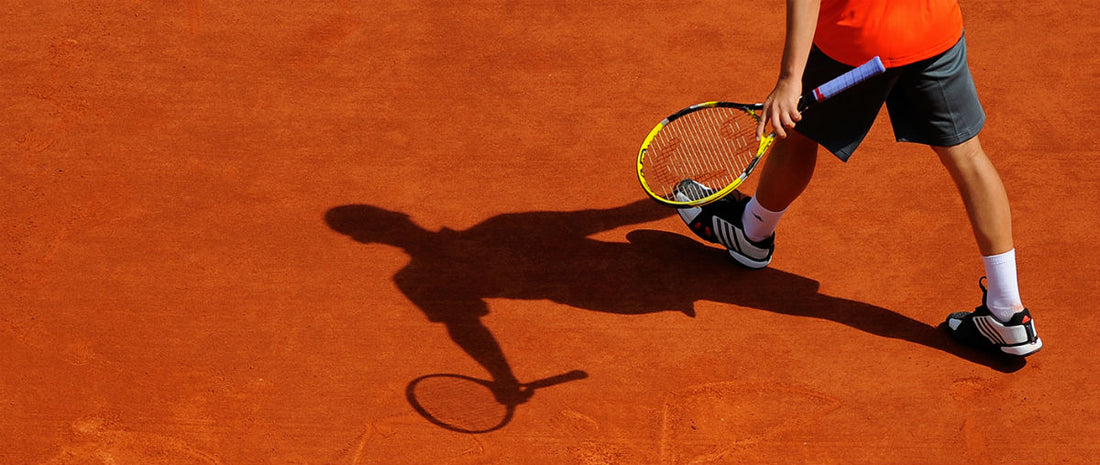Eric Butorac is the ATP Player Council president and an accomplished doubles specialist. Eric's tennis journey started in a small Minnesota town and has taken him to tennis' top level circuit. His story has been in some ways cliche, at times unbelievable, and for many quite unexpected. Here is the seventeenth in a series of accounts shared by Eric.
I was standing outside the station waiting for the train to come. The night before, I lost in the quarterfinals of a 2003 Futures event in Rodez, France. I was on my way to play in a money tournament in a nearby town that evening. I would go on to win that match and lose in the semifinals the following morning. This was just one of the many advantages of a French money tournament; if you are a top seed in an event, you often start in the quarterfinals—sometimes even the semis! I didn’t have to spend time playing uncompetitive matches against low-ranked players, and was able to make 250 euros just by winning my first match. I had been in France for about three months. I’d played six Futures events, 12 money tournaments, and signed a contract to play league tennis the following spring.
I wasn’t making a profit yet, but I was losing less money than many of my friends playing the Futures circuit back in the U.S. Also, financial necessity was making me squeeze in as many money tournaments as possible, and as a result I was getting in more matches than ever. At one point I actually played 32 matches in a month, 25 more than my friend back home. So, comparing that to my cohort of friends living in the U.S., it seemed there was a reason I was developing faster.
On top of that, due to the very exact nature of the French ranking system, all of my money tournament matches were competitive ones. It’s not exactly like that in the States. Statistics from the Orange Park, Florida Futures event last week indicate that only 10 of 45 first-round matches were “competitive.” Had I spent the early days of my pro career competing in the United States I’d have played fewer matches, less competitive ones, and probably run out of money in the first year. I don’t believe I could have made it as an ATP player if I had chosen this route.

My club team in Grenoble, France. A chance to play competitive matches, make some good friends, and earn extra income while on tour. (Photo credit:
Olivier Mamy / Gre-Sports)
In France, a player ranked #500 in the world can have three professional revenue streams. Aside from competing on the ATP Tour, they can play club matches, earning close to $2,000 for each of five to six club matches played in the summer. When they enter a money tournament, they will start competing at a point in the event where they are earning approximately $500 per match, and playing three matches can earn them up to $2000. It’s a lucrative career that some choose over playing any ATP events at all. Instead they focus on playing league tennis in multiple European countries. Someone competing at this level earns $50,000 per year by living and playing in Europe, while players in the United States aren't breaking even. Others, like me, will use club tennis and money tournaments to supplement and help support an aspirational ATP career that isn’t turning a profit just yet.
We need to start addressing the state of professional tennis in our country. It has become so difficult to make a living that even the many of the most highly-ranked U.S. college players are choosing the traditional working world over the ATP tour simply because it is too risky financially. If some U.S. college players ranked in the
ITA top 50 aren’t even attempting a pro career, how can we ever expect to catch up to countries like France in the future?

The illustration above shows that France has more players ranked in the ATP’s top 500 than the United States. In addition, there are more French players in the ATP’s top 100. These data are rather astonishing in that the population of the United States (322 million) is nearly five times as large as that of France (67 million).
The average age of a player in the top 100 is 28 years on the men’s side and 26 on the women’s. Assuming we accept this as a player’s peak tennis age, a player leaving college is still 4-6 years away from reaching their full potential. Most players are confronted with the decision to turn pro at 22. How can a player possibly know how good he/she can get in the next six years? It's like asking a junior player, age 12, to pick the correct college program.

Max Schnur shown here as a member of the Columbia men’s tennis team in 2013. (Photo credit:
Columbia Spectator)
Columbia graduate Max Schnur says, “The first few months of pro tennis were very tough. The ‘opportunity cost’ of what I was doing was becoming more real every day. Instead of spending my parents’ money, I could be working and making my own money like a lot of my friends. I was struggling with being fully committed because I didn't believe there was going to be light at the end of the tunnel.” In just 10 months on tour, Schnur, a player many were surprised to see turn pro, has climbed to #189 in the world in doubles and has set his sights on Grand Slam main draws.
So, what can we do? I believe that the creation of national club league, while not impossible, would be very challenging logistically. Where I do think there is potential is in the creation of more multiple-entry-point money tournaments, like those I played in France. These events are already happening all across Europe. They can provide a significant enough amount of prize money for aspiring pros—money generated mostly from entry fees and a little club support. The multiple-entry-point format allows everyone, from club players to top pros, to play in the same event. At the same time it creates appropriate level-based matches. How cool is it that everyone gets to compete in the same event? It means that 19-year old Taylor Townsend and 69-year old Gail Falkenberg could be playing in the same events each week...they just wouldn't be playing each other! (See
YouTube video clip.)

Although there are multiple ways to implement level-based play, Universal Tennis suggests multiple levels of flights, where lower level UTR players are able to start the event with similar level players before advancing in the draw. You can think of this as holding a pre-qualification, qualification, and main draw approach to introducing players to the event. Click
here for more details.
I strongly urge club owners to think about the big picture and consider hosting a multiple-entry-point money tournament. They would be helping the next generation of professional tennis players, while giving local players access to great tennis. It would allow the pro player a chance to earn extra income and the junior player to get level-appropriate matches for developmental gain and a chance to enhance his/her
Universal Tennis Rating (UTR). It’s an economical alternative to an age-group tournament where they’ll play 75% uncompetitive matches. If everyone buys into this idea, it could drastically grow the popularity of tennis in the United States. Just imagine what it would do to motivate juniors in tennis hubs around the country to play in events with these aspiring professional players. UTR has created a system that would facilitate and organize this type of event by providing accurate ratings for all competitors. Let’s get to work!
If your tennis club or organization is interested in running a multiple entry point tournament, contact Universal Tennis at
universaltennis.com
You can follow Eric Butorac on Facebook, Instagram or Twitter.
 My club team in Grenoble, France. A chance to play competitive matches, make some good friends, and earn extra income while on tour. (Photo credit: Olivier Mamy / Gre-Sports)
My club team in Grenoble, France. A chance to play competitive matches, make some good friends, and earn extra income while on tour. (Photo credit: Olivier Mamy / Gre-Sports) The illustration above shows that France has more players ranked in the ATP’s top 500 than the United States. In addition, there are more French players in the ATP’s top 100. These data are rather astonishing in that the population of the United States (322 million) is nearly five times as large as that of France (67 million).
The illustration above shows that France has more players ranked in the ATP’s top 500 than the United States. In addition, there are more French players in the ATP’s top 100. These data are rather astonishing in that the population of the United States (322 million) is nearly five times as large as that of France (67 million). Max Schnur shown here as a member of the Columbia men’s tennis team in 2013. (Photo credit: Columbia Spectator)
Max Schnur shown here as a member of the Columbia men’s tennis team in 2013. (Photo credit: Columbia Spectator) Although there are multiple ways to implement level-based play, Universal Tennis suggests multiple levels of flights, where lower level UTR players are able to start the event with similar level players before advancing in the draw. You can think of this as holding a pre-qualification, qualification, and main draw approach to introducing players to the event. Click here for more details.
Although there are multiple ways to implement level-based play, Universal Tennis suggests multiple levels of flights, where lower level UTR players are able to start the event with similar level players before advancing in the draw. You can think of this as holding a pre-qualification, qualification, and main draw approach to introducing players to the event. Click here for more details.

